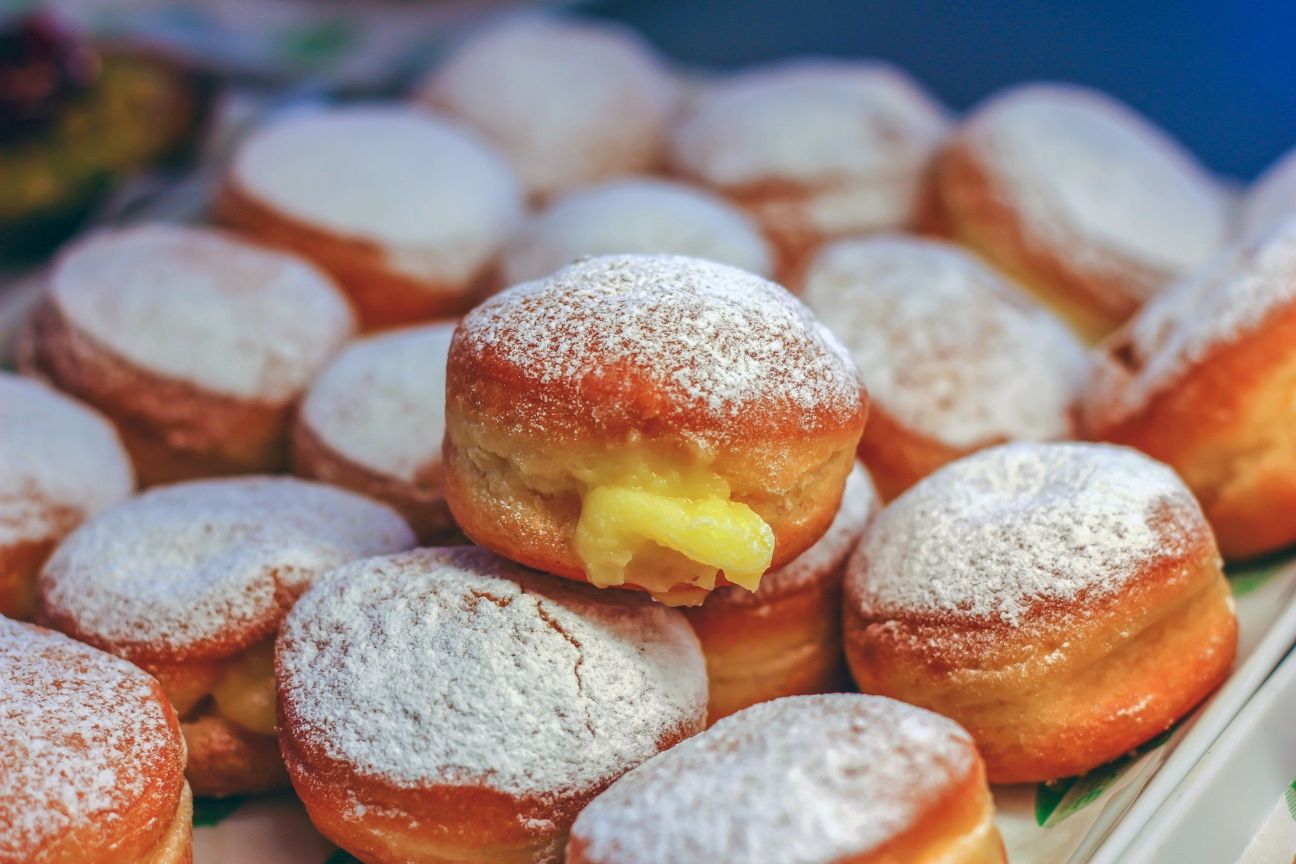
What is a Bombolone? Imagine biting into a soft, fluffy doughnut filled with creamy goodness. That's a Bombolone! Originating from Italy, these delightful pastries are similar to doughnuts but typically filled with custard, chocolate, or jam. Unlike their American counterparts, Bomboloni (plural for Bombolone) are often enjoyed without a hole in the middle. They are a popular treat in Italian bakeries and cafes, often dusted with sugar and served warm. Whether you have a sweet tooth or just love trying new desserts, Bomboloni offer a delicious experience that’s hard to resist. Ready to learn more about these tasty treats?
What is a Bombolone?
A bombolone is an Italian doughnut, known for its fluffy texture and delicious fillings. Originating from Italy, these sweet treats have captured the hearts of dessert lovers worldwide. Let's dive into some fascinating facts about bomboloni.
-
Bomboloni are traditionally filled with custard, jam, or chocolate. The fillings vary by region and personal preference.
-
The name "bombolone" comes from the Italian word "bomba," meaning bomb, due to their round, plump shape.
-
Unlike American doughnuts, bomboloni are typically fried in olive oil, giving them a unique flavor.
-
In Tuscany, bomboloni are often enjoyed as a breakfast treat, paired with a cappuccino.
-
These doughnuts are usually coated in granulated sugar, adding an extra layer of sweetness.
History of Bombolone
The history of bombolone is as rich as its fillings. This section explores the origins and evolution of this beloved pastry.
-
Bomboloni date back to the Renaissance period in Italy, where they were enjoyed by the nobility.
-
Originally, bomboloni were made with a simple dough of flour, water, and yeast, without any fillings.
-
The introduction of sugar and fillings to bomboloni came during the 18th century, influenced by other European pastries.
-
Bomboloni became popular in Italian street food culture in the 19th century, sold by vendors at fairs and markets.
-
Today, bomboloni are enjoyed worldwide, with variations found in many countries, including Spain, where they are known as "berlinesas."
How Bombolone is Made
Making bombolone involves a few key steps that ensure their fluffy texture and delicious taste. Here's a look at the process.
-
The dough is made from flour, sugar, eggs, butter, and yeast, which is left to rise until it doubles in size.
-
After rising, the dough is rolled out and cut into circles, which are left to rise again before frying.
-
Bomboloni are fried until golden brown, usually for about 2-3 minutes on each side.
-
Once fried, they are filled with custard, jam, or chocolate using a piping bag.
-
Finally, bomboloni are rolled in granulated sugar while still warm, ensuring the sugar sticks to the surface.
Variations of Bombolone
Bomboloni come in various flavors and styles, each offering a unique twist on the classic recipe. Let's explore some popular variations.
-
Some bomboloni are filled with Nutella, adding a rich, chocolate-hazelnut flavor.
-
Lemon curd-filled bomboloni provide a tangy contrast to the sweet dough.
-
In Sicily, bomboloni are sometimes filled with ricotta cheese, giving them a creamy texture.
-
Savory bomboloni, filled with ingredients like ham and cheese, are a popular variation in some regions.
-
Vegan bomboloni, made without eggs or dairy, cater to those with dietary restrictions.
Fun Facts About Bombolone
Bomboloni have some interesting quirks and trivia associated with them. Here are a few fun facts to enjoy.
-
Bomboloni are often enjoyed during Italian festivals and holidays, such as Carnevale.
-
In some Italian regions, bomboloni are called "frati," which means "friars," due to their round shape resembling a monk's tonsure.
-
The largest bombolone ever made weighed over 150 pounds and was created in Italy in 2015.
-
Bomboloni are sometimes served with a side of dipping sauce, such as chocolate or caramel.
-
In Italy, it's common to find bomboloni sold at beachside kiosks during the summer months.
Bombolone Around the World
Bomboloni have made their way across the globe, with each culture adding its own twist. Here's how different countries enjoy this Italian delight.
-
In Argentina, bomboloni are known as "berlinesas" and are often filled with dulce de leche.
-
Portuguese "malasadas" are similar to bomboloni but are typically not filled and are coated in sugar and cinnamon.
-
In Israel, bomboloni are enjoyed during Hanukkah and are called "sufganiyot."
-
The French version, known as "beignets," are often filled with fruit preserves or chocolate.
-
In the United States, bomboloni have gained popularity in Italian bakeries and are often found at food festivals.
-
Japanese "anpan" are similar to bomboloni but are filled with sweet red bean paste instead of custard or jam.
Sweet Ending
Bombolone, those delightful Italian doughnuts, have a rich history and a flavor that’s hard to resist. From their origins in Tuscany to their popularity across the globe, these treats have captured the hearts of many. Whether filled with custard, chocolate, or jam, each bite offers a taste of Italy’s culinary heritage.
Making bombolone at home can be a fun and rewarding experience. With simple ingredients and a bit of patience, you can enjoy these sweet treats fresh from your kitchen. Remember, the key to a perfect bombolone is a light, fluffy dough and a generous filling.
Next time you’re craving something sweet, consider trying your hand at making bombolone. They’re not just a dessert; they’re a little piece of Italian culture you can enjoy anytime. Happy baking!
Was this page helpful?
Our commitment to delivering trustworthy and engaging content is at the heart of what we do. Each fact on our site is contributed by real users like you, bringing a wealth of diverse insights and information. To ensure the highest standards of accuracy and reliability, our dedicated editors meticulously review each submission. This process guarantees that the facts we share are not only fascinating but also credible. Trust in our commitment to quality and authenticity as you explore and learn with us.
